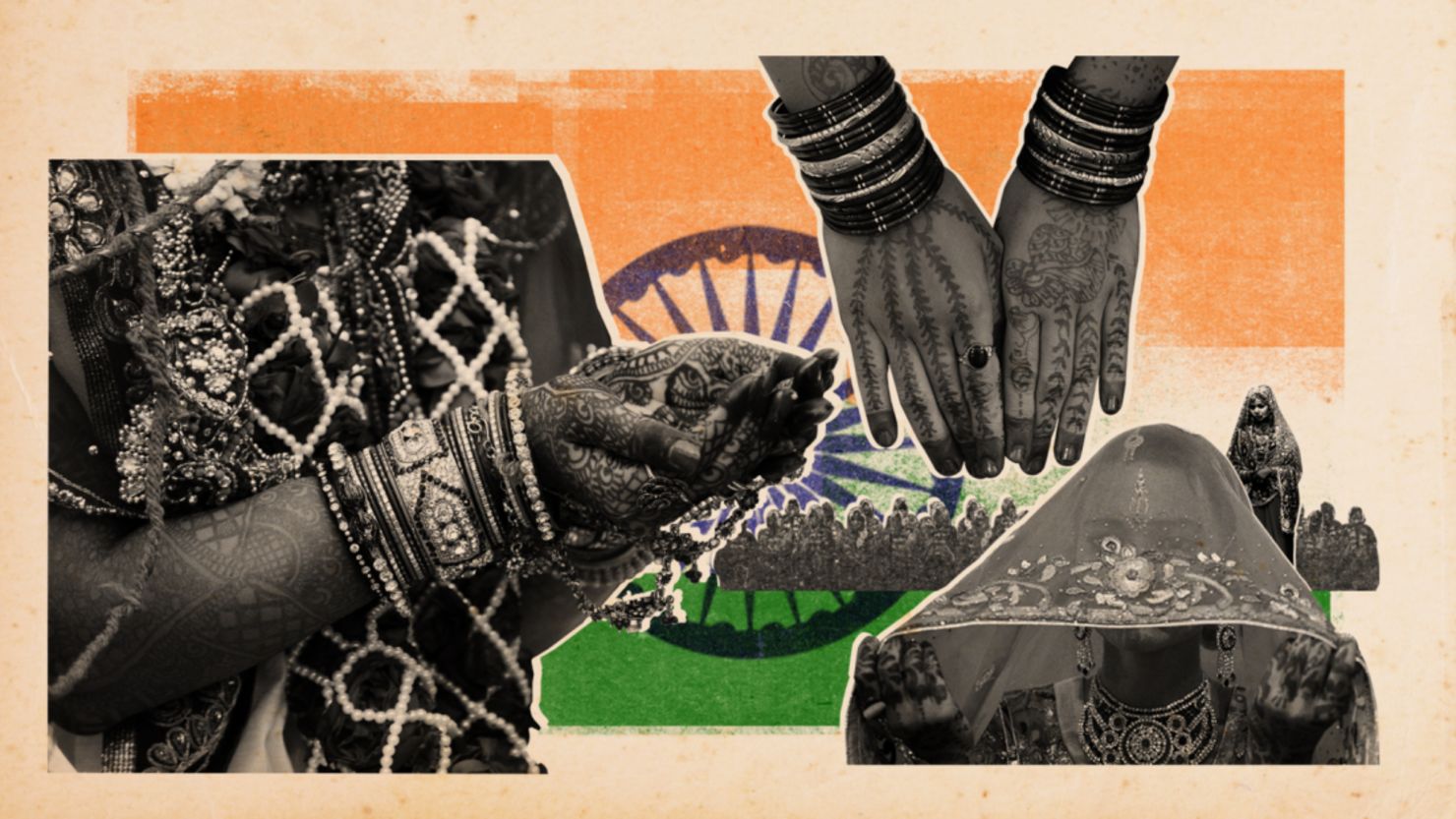From One Case to a National Mirror
In Greater Noida, there was a case where a young lady by the name of Nikki lost her life to such cruelty on dowry demands. Her passing is not a monstrosity by itself It is the reflection of the mirror which lets the society see itself with the same marriage arranged between the markets with the price, with the same tolerance of customary gifts, with the same blindness of coercion until the life of a woman is out of danger. The event to have occurred to Nikki makes sense only within a national orientation that is cross-class, cross-regional, and cross-linguistic. Yet despite decades of legislation to criminalize dowry and punish its deadly outcome, the figures remain worryingly congested, and the routes to justice slim and blocked.

The article is structured as a legal framework, investigation issues and the social trends which still lead to dowry deaths. It does not stop at a headline but draws the entire landscape and outlines restructuring measures that are practical, quantifiable and long overdue.
A Brief History: When “Gifts” Become Coercion
In its earliest inscriptions dowry frequently is in the form of free will, streedhan and intrafamilial transfers. In the long run, as marriage became stiffened into a contract between families, those transfers developed into anticipation and then into extortion. The boundary between gifts and dowry became fuzzy, and as a result it has been hard to enforce: the same item can be given as love by one family, and required as ransom by another.
What has always been unchanged is a sex economy in marriage. A bride is supposed to pay with resources that offset her apparent helplessness, whereas a groom’s family can translate social standing into bargaining power. When these expectations conflict with the refusal of a woman or the inability of her family to pay, harassment starts. When it grows out of check we term them as a crime. When it becomes mysterious death then it is dowry death.
The Scale of the Crisis: What the Data Say
Even the official figures which go only so far as to draw a picture of the crisis which has national dimensions. According to the NCRB data of 2022 about 6,450 dowry-related deaths have been recorded in the country accounting to a minor drop than the previous years, still representing dozens of deaths of women every week. Between 2017 and 2022, around 7000 women died in dowry deaths on average each year, a sluggish curve that speaks volumes about policy deadness and implementation failure.
Numbers are not the whole extent of mischief. These are merely the final stage of a process that starts with psychological abuse and economic blackmail before moving on to physical mistreatment and all-too-often the death or faked disaster. Dowry deaths are under reported as most deaths are never classified as dowry deaths because of poor investigation, weak forensics and social pressure to record the deaths as suicides or accidents. The official counts have always cautioned that they do not represent the actual cases.
The Law: Strong on Paper, Weak in Practice
Under Section 304B, Indian Penal Code: the Dowry deaths offence
Section 304B spells out the conditions involved in a dowry death with these words: a female dies by fire or bodily pain, or in any unusual manner; within seven years of the wedding; and, prior to the demise, the woman was subjected to cruelty or harassment which was based on a demand of dowry. This attracts a rebuttable presumption that the husband or his family members were the perpetrators and the penalty carries a punishment of seven years to life.
Section 113B, Indian Evidence Act: The presumption
To eliminate the complexities of proof within households, Section 113B introduces a presumption that where the statutory conditions are fulfilled, the dowry death is caused by any of the husband or his relatives. The Supreme Court has affirmed that when facts that are considered foundational have been established, the onus is shifted to the accused to prove under credible evidence rather than face the danger that the presumption is correct.
Dowry prohibition Act 1961: Monetizing the Dowry Economy
The Dowry Prohibition Act criminalises the giving, taking, demanding, or abetting giving or taking of dowry by prescribing minimum punishment. Punishments have been enhanced by amendments, and the customs surrounding its related practices have been addressed, although the practice is patchily enforced, and records of both gifts and dowry are often impaired by social pressure.
The Transition Nyaya Sanhita Bharatiya
Following renumbering under the 2023 criminal law overhaul, the headings of the statutes and their numbering changed but not the policy intent to punish dowry-related murders and cruelty. The details of implementation, wing and transition towing terms, and the training of the police and prosecutors during this transition are essential, as a precarious reference to citation or charge-framing might lose the case to the court.
Why Cases Fail: The Investigative and Trial Bottlenecks
In spite of these efforts, the number of convictions in dowry deaths fall way short of the reported cases. The causes are achingly similar to the state-to-state and case-by-case:
- Late and Contested FIRs
Couples feel shocked, distraught and in many cases are left to rely on the same society that is pressurizing them to prevent scandal. Late FIRs create claims on the part of the defense of embellishment, and undermine the chain of causation. - Forensic Fragility
There is a notorious difficulty in analyzing fatal burns and so-called kitchen accidents. The preservation of the scene, post mortems by qualified forensic scientists and early toxicology may not be guaranteed in the district hospitals. - The “Soon Before” Problem
Judiciaries should have evidence that harassment preceded the death within a very short span. There are no detailed diaries, communications, banking details or witnesses next door, and the chronology becomes hazy. When the witnesses become hostile, the time-line becomes obsolete. - Hostile Witnesses and Social Retraction
Intra-family cases are a boiler-plate. Witnesses can recant to save community affiliations, children custody or monetary settlements. The issue then falls on the buffer of documentary forensics and the digital junk that was never retrieved. - Charge Framing and Presumptions
If police fail to establish the foundational facts for Section 304B and 113B, the presumption is never triggered. Then the case reverts to a standard homicide or abetment-to-suicide proof burden, which is harder to meet. - Trial Delays
In the absence of peace on any part of the committing act, the Section 304b and 113B are not covered. The case then turns back to a standard homicide or abetment-to-suicide proof burden, which is more difficult to satisfy.
Adjournments, absence of judges, and procedural breakdowns burn the energy of north Koirala and Jang Bahadur Lama families. Memories fade and witnesses go. The weight of proof increases by time.

- Data Gaps and Policy Fog
Patchy monitoring, incomplete records (missing dowry gift lists under the 1985 Rules), seldom reported, and fragmented registers make states unable to benchmark performance and even learn about some on-performing districts. Recent case laws, such as in Kerala, also depict strains in punishing dowry assurers, which can tangibly deter victims of the families to report.
The Human Texture: Patterns That Repeat
The Silent Strangler
Marriage is a time when you often find yourself swept up by a barrage of suggestions that take on hard demands the months following the wedding: a new scooter, a new car, cash for a business, gold for the sister getting married. Every request is justified as humble or family- Questioning anything is inculcated as a factor of guilt.
The Isolation
Her natal family may be shut down or controlled as pressure rises. Phone calls are tapped off Social media passes silence. When she concedes to visit home, she could downplay the same to avoid any form of retaliation once she is back.
The Last Days
When the family rejects a last request or fails to meet a deadline, the emotional temperature becomes tempestuous. The result is too frequently given out as an accident with a gas stove, or a suicide without note or previous record, or a sudden illness with equivocal medical records. It is accident and force that should be separated solely by an inquisitive investigation, and despair and provoked abetment that should be divided by in fact.
The Law on the Ground: What Courts Have Said
In Satbir Singh v. State of Haryana (2021), the Supreme Court reiterated that once the prosecution proves the death occurred within seven years of marriage under suspicious circumstances and cruelty “soon before death,” the presumption of dowry death arises under Section 113B. The accused must then present evidence to rebut this presumption. This case is regularly cited to guide trial courts in handling dowry death prosecutions and to prevent mechanical acquittals when the timeline and cruelty are established.
Beyond the Binary: Not Just “Victims” and “Villains”
Reports indicate that most of the cases involve a bride being targeted by the relatives of her husband, but the legal and media spaces give rise to increasing instances of complex scenarios where not only the allegations, but also the counter-responses can introduce a cross-pattern. Little is often requested of the courts in terms of purported demands of the side of the bride, or mutual coercion in failure of marriage. These fringe cases do not rinse out the other fact: that the dowry institution is unbalanced against women; they show how deeply the dowry mentality has pervaded the entire marriage market, enjoining transnationalism that erodes trust and decent partnership.

What Works: A Practical Blueprint for Reform
India is not short of laws It does not have a time-bound combined with evidence and survivor-related workflow. This blueprint is aimed towards the adoption and adaptation of these structures, by the state police, prosecution departments, health systems, and courts. It is precise in order to be audited and published on an annual basis.
First 48 Hours: Evidence that Wins Cases
- Scenes of Crime Protocol
Presume every unnatural death of a female under seven years of wedlock as the case of dowry death till it is proved otherwise. Write the scene, seal the scene Document with photographs and video all the angles. Detection of burn patterns, appliance location and air circulation.
- Consent and Digital Seizure
Hash verification of phones of important parties ought to be immediately grabbed. Access messaging apps, email, call logs and cloud backups with court orders. Take no time about it
- Medical Documentation
There is a mandated postmortem by a forensic expert and not a general doctor. They require a standardized autopsy form in suspected dowry deaths including checklists of burn depth and inhalation injury, poison screens, and evidence of struggle.
- Financial Trail
Freeze and trace the pertinent bank accounts. View your UPI and wallet transactions of the previous 12 months. Gives away flags to relatives of the husband at marriage and anniversaries.
- Witness Canvass
Use same-day testimonies by neighbors, colleagues and domestic employees. Record on audio. Know about fights, physical injuries (visible), and unscheduled shopping.
- Register Retrieval
In the event of the couple having a gift list as specified in the 1985 Rules under the Dowry Prohibition Act, obtain the same; failing which, indicates that there was none. Emboss photos on necklaces and in-home adornments.
2) Survivor and Family Support
- Dedicated Family Liaison Officer
Assign a trained officer to call the natal family once a week, to report on progress and also to prepare them to withstand the pressure of the jaws of trial. Offer contacts with government legal aid and counseling.
- Protection Orders
Fast track protection orders of the domestic violence legislation as there are other women in the home that need protecting.
- Protective Custody of Kids
In the case where there are children, their safety should be prioritized and custody decisions should not be used to induce aggressive settlements.
3) Prosecution Playbook
- Charge Framing Discipline
File charges under Section 304B and 498A where applicable and note reason on case not filed. Do not allow Section 302 to be overcharged because it can backfire.
- Soon Before Death Docket
Create a chronology of harassment with bank statements, chat messages, and testimonies of neighbors as well as previous complaints, however unofficial. The plain timeline chart supplied with the charge sheet would usually convince the court that the presumption should be applied.
- Counterproductive Witness Strategy
Anticipate recantations. Utilize early videographed statements and digital records as well as independent forensics to limit the need to depend on tainted family testimony.
- Victim Impact Compilation
Submit a dossier with testimony of friends and colleagues of the woman about the changes of behavior, fear, and demands of support. These accounts are tend to be more honest than family accounts
4) Courtroom Reforms
- Fast-Track Dockets
Introduce special dowry death calendars where adjournments are prevented by successive trials. The case is to be completed within 12 months since charges are framed.
- Forensic Videoconference
Site forensic experts by allowing them to be deposed by secure video to eliminate the time element and the cost limitations of the outlying district hospitals.
- Sentencing Guidelines
Introduce a band of sentencing indicative of cruelty and dowry death to deliberately cover aggravating factors such as repeat demand, prior injuries and attempts to forge evidence.
5) Public Health and Prevention
- Mandatory Reports at Hospital
Any woman who appears seriously burned or poisoned within seven years of the marriage will automatically bring out an automatic medico-legal case alerting the police and putting the husband under a human shield.
- Community Health Risk Alerts
The training of HAs and ANMs can ensure that they detect red flags in the course of the postnatal visit or family counseling sessions and refer women to helplines and legal service providers.
- School and College Curriculum
Make it seem normal to talk about consent, financial resilience, and unreasonable marital demands. Dowry flourishes in secrecy, it dies in the glare.
6) Data and Accountability
- Annual State Scorecards
Publication of state and district scorecards: unnatural deaths of married women, share of these investigated as possible dowry deaths, time between FIR and charge sheet, convictions, average time to complete the trials.
- Open Forensics
Standardise autopsy and evidence templates and audit non compliance. Sample closed cases for independent review by a multi-disciplinary panel at random.
- Digitization of Gift Register
Facilitate an optional digital record of wedding gifts that couples could curate on a trusted government site. It is harder to manipulate ex posts with transparency.
Culture Change: The Economy of Marriage Must be Disrupted
- Shame the Price Boast
Redefine dowry not as a tradition but as an invoice on a woman’s life. Religious leaders, film industries and wedding planners can work in campaigns that glorify ceremonies involving no dowry and a declaration by both families.
- Rewire Aspirations
The idea that parents spend extravagantly on weddings because of protecting their daughters and meeting their expectations is also professed among parents who are spending a lot of money on a wedding. The reality is the reverse of this statement: Expensive marriages increase demands in the future. Any culture that has modest and modest ceremonies leaves less space to bargaining and exploitation.
- Financial Independence
No woman can be better insulated than is her own cash and property. States may include incentives to encourage employers to hire an employer-nanny through a newly-married woman returning to work after a move, offer relocation stipends, and advertise the existing schemes.
- Tech as a Partner
Implement anonymous reporting applications that are in operation with One Stop Centres, district police and women helplines. Allow victims to upload evidence through the application in a secure way, such as photographs of injuries, screenshots of chats and voice messages, timestamped and hashed.
- Stakeholders as Men
Dowry is not a women’s issue. This is so because it is not an issue of women only but a societal problem. It is a test of the character of males. Universities and organizations can organize pledge programs where men can pledge to not only have zero-dowry marriages, withstand family pressure, and act as an abating force when their friends anchor the fact dowry was a right.
Frequently Misunderstood: Five Clarifications
- “If dowry is illegal, why punish the giver?”
The Act makes it a crime on both sides to undercut the market. Punishing givers can discourage victims from reporting. This tension is currently being reckoned with in the courts and governments, as is evident in the recent events of Kerala. Policy should give priority to immunity to coerced givers and policy should pay attention to the demand side. - “Aren’t many cases false?”
There is misuse of every law. What is wrong with dowry deaths is not excess counting of the number of deaths, but rather short-counting and lack of conviction. Remedies to misuse must be fine-grained and they cannot render the protection of genuine victims ineffective. - “It is a rural problem, right?”
Dowry even prospers in cities, but under the pretext of lifestyle improvement. Urban cases are reported better, but certainly not always better investigated. - “If she died by suicide, is it still dowry death?”
Yes, when statutory conditions and linkage with harassment is established. Courts do not just look at labels they look at causation and sequence. - “Can counseling fix this?”
The power of counseling can liberate, yet criminal coercion should be treated using criminal force. In case there is credible evidence that dowry was demanded and the requisite cruelties were committed, then legal action needs to be taken.
A Model District Protocol: From Policy to Practice
To illustrate how change looks on the ground, consider this six-step model any district could adopt within one budget cycle:
- Constitute a Dowry Death Task Unit inside the Crime Branch with a forensic liaison, a cyber officer, and a legal officer who vets charge sheets for statutory completeness.
- Adopt a 24-Hour Checklist for police and hospitals, co-signed by the Superintendent of Police and the Chief Medical Officer, with public dashboards for compliance.
- Create a Digital Evidence Locker at the district headquarters. All seized digital evidence is hashed, logged, and mirrored to prevent tampering allegations.
- Run “Seven-Year Alert” Clinics for newly married women at One Stop Centres, explaining rights, documentation, and early warning signs.
- Embed Prosecutors Early during investigation to ensure the charge sheet satisfies Section 304B and triggers the Section 113B presumption.
- Publish Quarterly Outcomes: number of unnatural deaths reviewed, how many registered as dowry deaths, average days to charges, convictions, acquittals with reasons, and remedial training conducted.

The Media’s Role: From Sensation to Structure
Reporting should avoid treating each death as an isolated tragedy. Every story should anchor the case within:
- The state and district trend for dowry deaths and convictions.
- Whether “soon before death” evidence was documented.
- The status of forensic compliance.
- The presence or absence of a gift register.
- What the trial timeline looks like and who is accountable for delays.
Such structured reporting builds public memory and pressures systems to improve.
Education and the Next Generation
Dowry survives because young people enter marriage with financial myths and social scripts they did not write. Schools and colleges must offer modules on:
- Marital economics: how dowry corrodes trust and multiplies risk.
- Legal literacy: understanding 498A, 304B, and evidence preservation.
- Conflict skills: boundaries with in-laws, joint finances, and shared decision-making.
- Bystander intervention: how peers can respond to red flags among friends.
Career centers should normalize conversations about dual-career marriages, relocation support, and equal property planning.
What Families Can Do Today
- Declare Zero Dowry publicly during engagement. Put it in writing.
- Keep a Transparent Gifts List with values and donor names; store photos and receipts.
- Open Separate Bank Accounts for the bride’s income and savings.
- Document Harassment Early: save chats, record dates, and tell trusted friends.
- Know the Hotlines: Women’s helplines, One Stop Centres, and state legal aid numbers should be saved on phones.
What Corporates and Universities Can Pledge
- Zero-Dowry Marriage Pledge for employees and students, with public recognition and incentives.
- Crisis Leave for employees facing domestic harassment.
- Anonymous Reporting Channels linked to local authorities for severe threats.
- Mentorship for returners to work post-marriage or childbirth, reducing financial dependence.
Conclusion: Law Must Bite, and Culture Must Heal
India has penned strong words in its laws Section 304B and Section 113B are aimed at resolving a lethal imbalance of strength in marriage. The Dowry Prohibition Act is an indication that sticker-priced marriage is not any marriage at all but a deal that is fraught with intimidation. Words on a page cannot preserve lives when inquiries wobble, examinations buckle, and trials drift.
What will actually save lives is a model system in which all suspicious deaths occurring within seven years of marriage are treated as possible crimes of coercion. It is a health prevention strategy that can raise alertness at hospitals and domestic settings. It is a culture movement that resists theatrics in weddings in favor of modest weddings, disparages apparently selfless requests camouflaged as gifts, and rejoices whenever men and families decline the dowry-based economy.









